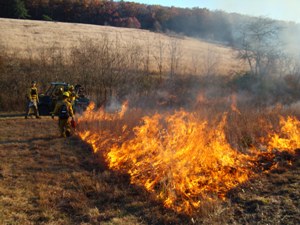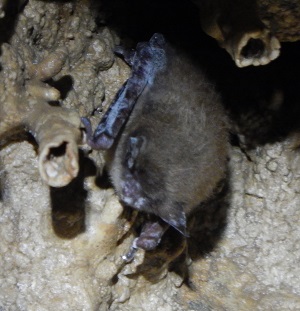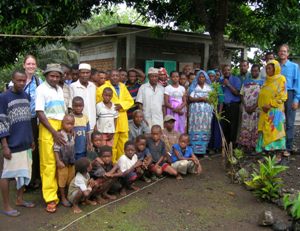Biodiversity is steadily disappearing and ecosystems are persistently degrading worldwide, and human activity is the primary cause. Our lab is examining several critical and emerging threats and working to develop practical solutions to protect and aid the recovery of threatened species and ecosystems. Our work focuses on these main themes:
Emerging infectious diseases of wildlife
Emerging infectious diseases pose an increasing global threat to wildlife species in several taxa. Our lab has focused extensively on white-nose syndrome, a devastating disease of hibernating bats caused by an invasive fungal pathogen. This disease has killed millions of bats, reducing their beneficial roles in insect regulation, pest control, and the maintenance of rare cave communities. We are currently studying the impacts of white-nose syndrome on regional populations of bats, the ecological and behavioral responses of bats to the disease, and the identification of novel and effective means to manage the pathogen and protect wild bats from the worst effects of the disease.
Ecological restoration within working landscapes

Prescribed fire for land management at Fort Indiantown Gap. Photo courtesy of Wildlife Program, Fort Indiantown Gap, Pennsylvania National Guard
Working landscapes – land areas for which the primary purpose is not conservation – represent an underutilized resource for conserving biodiversity. Our lab is conducting applied ecology research to evaluate means to enhance the conservation value of working landscapes. Current projects focus on facilitating the recovery of at-risk species and ecosystems on military training areas through prescribed fire, grassland management, sylvicultural treatments, and other land management activities. Our current studies focus on understanding the ecological impacts of military training and management activities on forest and prairie ecosystems and developing strategies for maintaining ecosystem services and biodiversity within the context of an active program of military training activities.
Species interactions and biodiversity

A male Sanford’s lemur (Eulemur sanfordi) foraging on a fig (Ficus grevei) tree in Madagascar. Photo by Brent Sewall.
Species commonly interact with each other to obtain needed resources (like energy, nutrients, or shelter) or services (like protection, pollination, or seed dispersal). Most organisms would not survive – and most communities would not long persist – without these interactions. Our lab investigates in-depth how species interactions shape biodiversity patterns. Our work examines the profound effects that interactions among pairs or networks of species have on the structure and dynamics of ecological communities. Current projects especially emphasize pollination, seed dispersal, and host-pathogen interaction types.
Species invasions

Field crew studying effects of the invasive spotted lanternfly (Lycorma delicatula) on native forest plants
A newly invasive insect pest known as the spotted lanternfly (Lycorma delicatula) poses an important, emerging threat to forest habitats in Pennsylvania. The spotted lanternfly (SLF) is a planthopper native to northern China but was recorded for the first time in the Americas in southeastern Pennsylvania in 2014, suggesting a recent human-mediated introduction. Since then, it has spread across much of Pennsylvania and to neighboring states. The SLF is of particular concern as it has the potential to reach exceptionally high abundances within invaded landscapes. and could cause harm to a wide variety of tree, shrub and vine species. Much remains unknown, however, about these potential impacts. We are undertaking a collaborative study at the Temple Ambler Field Station to explore impacts of the SLF on some of Pennsylvania’s native plants.
Conservation planning in the tropics
Our lab is collaborating with conservation practitioners and local stakeholders to develop and assess effective conservation strategies to combat the impacts of land use change and exploitation on biodiversity in the tropics, through science-based management of endangered species, establishment of protected areas, and other approaches. In our work, we recognize the inherent social context of threat to biodiversity, and integrate local perspectives and interests into conservation strategies. Our studies focus primarily on primate, bird, and fruit bat species in tropical forests, and on the people who live nearby. We work in areas where exceptional numbers of rare and endemic species occur, including the western Indian Ocean and West Africa.


